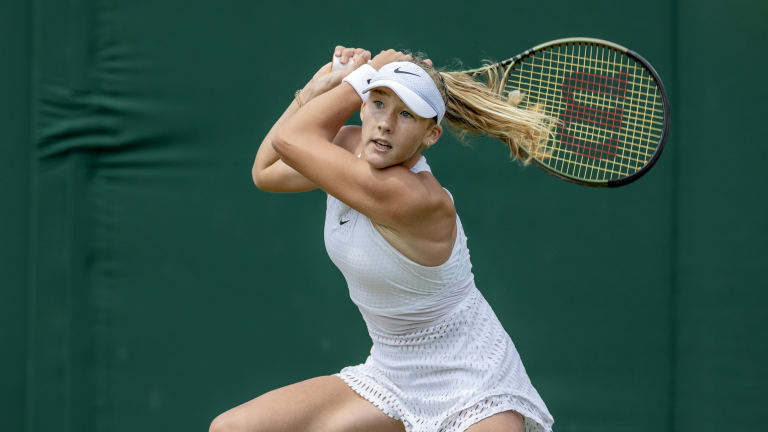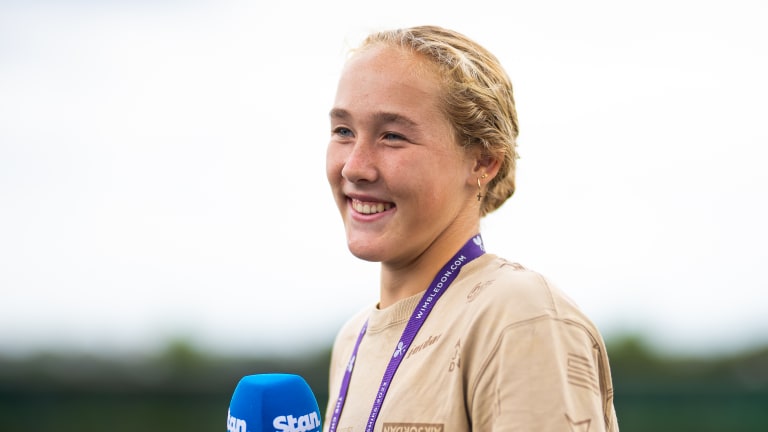Wimbledon
Mirra Andreeva has been touted as The Next Big Thing, and she's delivering
By Jul 09, 2023Wimbledon
The battle for No. 1 & more: Four WTA takeaways from the Wimbledon fortnight
By Jul 17, 2023Wimbledon
Can anyone stop Alcaraz or Djokovic? Four ATP takeaways from the Wimbledon fortnight
By Jul 17, 2023Wimbledon
Carlos Alcaraz's Wimbledon trophy keeps him at No. 1, Marketa Vondrousova's lifts her to No. 10
By Jul 17, 2023Wimbledon
Analysis: Carlos Alcaraz's Wimbledon title shows he is exactly who everyone thought he was
By Jul 17, 2023Wimbledon
Wimbledon champ Carlos Alcaraz shows us there’s no need to rein in expectations for him
By Jul 16, 2023Wimbledon
Hsieh Su-Wei and Barbora Strycova win second women's doubles title together at Wimbledon
By Jul 16, 2023Wimbledon
Novak Djokovic rues his missed chances after losing a highly entertaining Wimbledon final in five sets
By Jul 16, 2023Wimbledon
Fairytale Finish: Barbora Strycova wins last Wimbledon with Hsieh Su-Wei
By Jul 16, 2023Wimbledon
Carlos Alcaraz becomes sixth player to defeat Novak Djokovic in a Grand Slam final
By Jul 16, 2023Wimbledon
Mirra Andreeva has been touted as The Next Big Thing, and she's delivering
The 16-year-old has reached the round of 16 at Wimbledon—just her second career Grand Slam tournament.
Published Jul 09, 2023
Advertising
Advertising

A win for Andreeva against Eastbourne champ Madison Keys on Monday would make her the youngest Wimbledon women’s quarterfinalist since Anna Kournikova in 1997.
© Corbis via Getty Images
Advertising
Advertising

One of Andreeva's many post-match interviews.
© 2023 Robert Prange